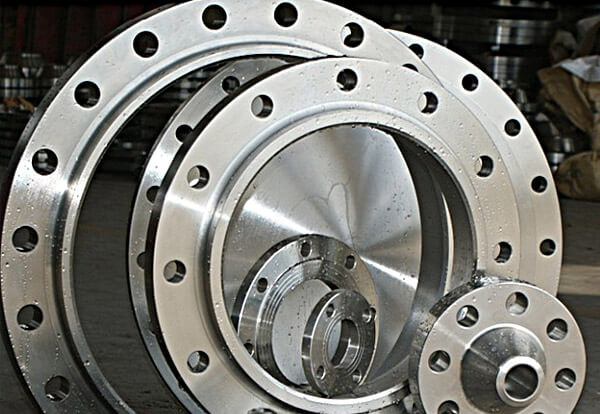When there are problems with quality control during the manufacturing process, flanges, which are a type of part that connects and seals, have a greater risk of leaking than other types of parts. Because of this, the procedure of welding and stainless steel flange the production of flanges are of the utmost importance. As a result of this, monetary losses, damage to the environment, and possibly even safety accidents will occur.
The process of forging is another one that is threaded flanges utilized.The process of forging is another one that is utilized.
2. A punching machine is used to create the round hole in the flange, as well as the hole in the billet itself. Both of these holes are drilled through the center of the billet. The blank flange that was formed is then heated in an electric furnace in order to increase the strength of the flange. This step takes place before the flange is attached to the billet. Cast flanges have the potential to be used in a wide variety of applications. The orchid Cast flanges have the advantage of being able to produce flanges in a variety of different complex shapes. the orchid Cast flanges have the advantage of being able to produce flanges in a variety of different complex shapes.
Molten steel is shaped into the shape of the flange by first melting the metal into liquid molten steel, then pouring the liquid molten steel into a metal mold that has been preheated and is maintained at a constant temperature, and finally shaping the molten steel into the shape of the flange. This method begins with the metal being melted into liquid molten steel. After that, the casting is given time to naturally cool down, and it is finally formed after a certain amount of time has passed. After this step, you should use water to quickly cool it down, and then demold it. Casting the flange is an example of a typical production method. After that, the casting is given time to naturally cool down, and it is finally formed after a certain amount of time has passed. Not only will this make the flange last longer, but it can also be used after polishing and anti-rust treatment have already been applied. In the not too distant future, when flange materials and manufacturing processes have advanced further, the entire joint will be able to be guaranteed. The process of connecting is now more accurate and definitive, thereby increasing people's safety and reliability. The holes in the flange are utilized for the purpose of securing tamper-resistant seals. In the not too distant futureThis not only makes it possible to connect the pipes, but it also helps to keep leaks from occurring. Flanges that are fabricated from stainless steel can be useful in a wide variety of settings.

Flanges, which are components for pipes, are almost always made from stainless steel that is resistant to corrosion and provides excellent functionality. When put to use, flanges manufactured from stainless steel have the ability to effectively withstand corrosion, pitting, and rusting. In addition to this, stainless steel is wear-resistant and possesses a high degree of rigidity. Flanges also have a distinct appearance.
If we are going to continue with the theory that it is a hydrogen shielding gas, then the pressure of the gas in question needs to be greater than 20 kBar. This is a requirement for moving forward with the theory. Annealing air, butt welding flange typically utilizes pure hydrogen as annealing air, and the air purity is gr. Air that has been annealed. Despite this, it is impossible for there to be an excessive amount of oxygen or water vapor in the air. Annealing air. The survey could also be performed by looking through the survey hole in the process annealing furnace. This is the case irrespective of whether or not the annealing temperature in the butt welding flange reaches the specified temperature. The survey could also be threaded flanges carried out using this alternative method. The butt weld will be performed on the region that has previously been annealed.
Butt weld flanges are helpful in regulating the flow of water vapor through foundry furnaces so that the desired temperature can be maintained. On the other hand, the material that makes up the body of the furnace needs to be dried for the very first time before it can be used. This is of the utmost importance if the butt welding flange pipe fittings have any holes in them; if water is allowed to leak inside, the air in the furnace will be compressed if it is allowed to do so. On the one hand, it is essential to determine whether or not the material that constitutes the body of the furnace is dry. This is of the utmost importance if the butt welding flange pipe fittings have any holes in them. The second thing that needs to be taken into consideration is whether or not the butt welding flange pipe fittings that are being introduced into the furnace have an abnormally high number of water stains on them.

An exhaust port needs to be opened whenever hydrogen is being used as a protective gas. The inspection method can be used to wipe the cracks in the joints of the annealing furnace with water to see if they run; the location where the gas leaks for a short period of time is the location where the annealing furnace enters the tube, and it is also the location where the tube exits the annealing furnace.